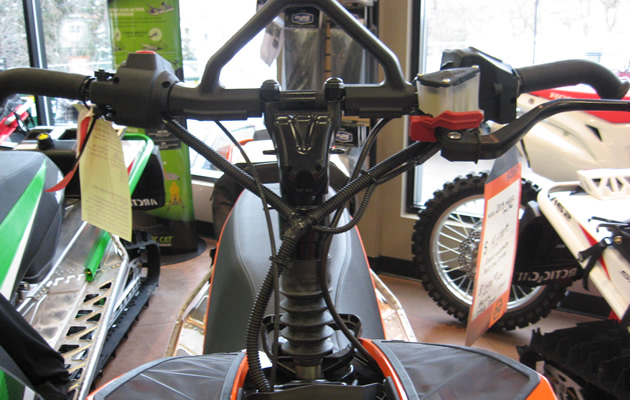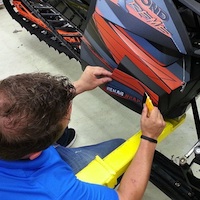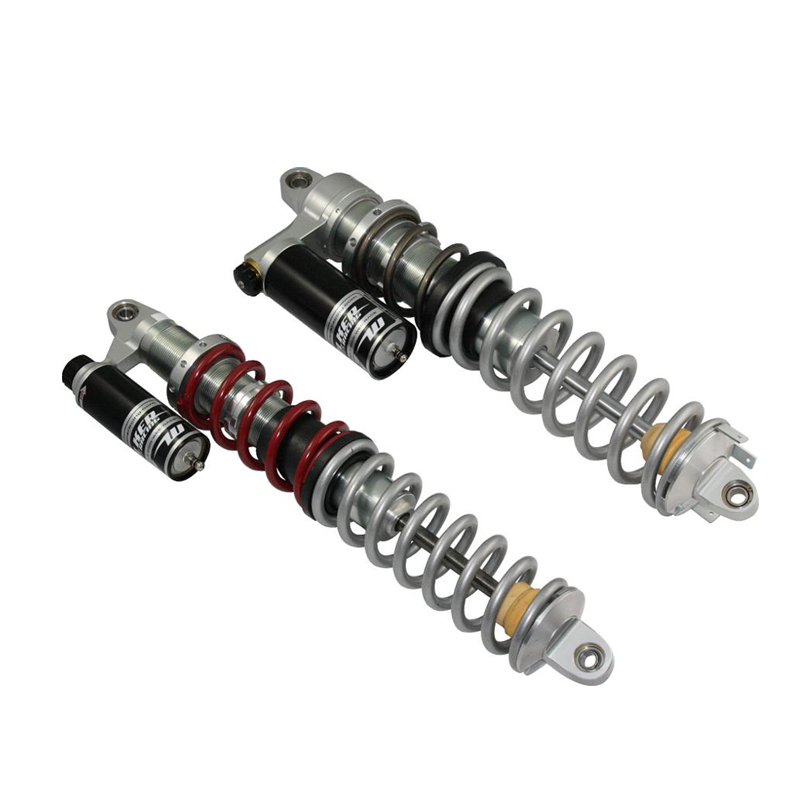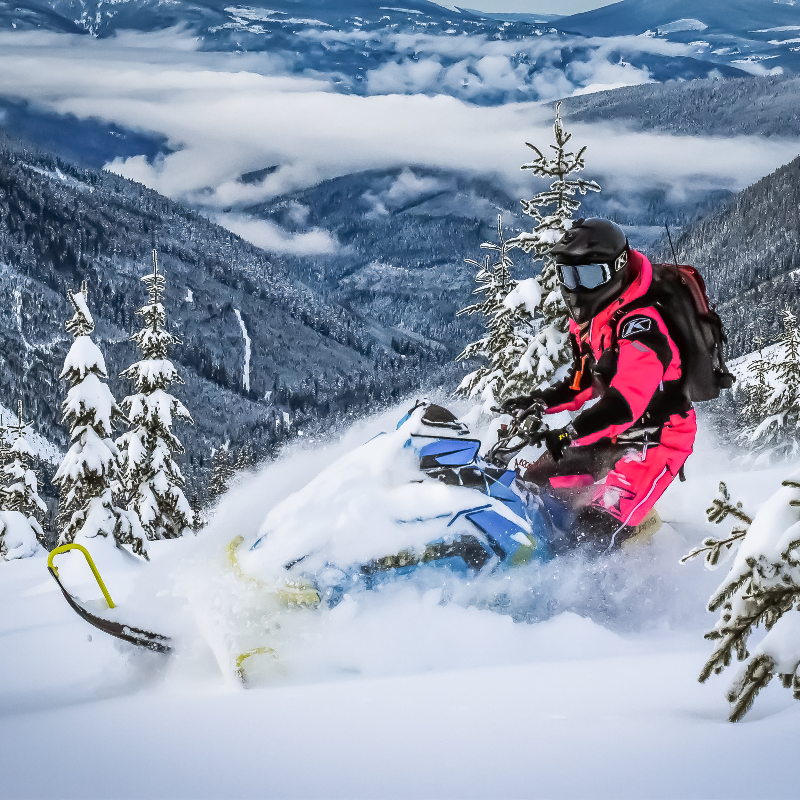There are so many options when you begin to consider personalizing your sled—everything from performance enhancement to esthetics. Here are some common modifications and things to consider before jumping in with both feet.
Running boards
This is one of the most common modifications. Aftermarket options for running boards are usually geared towards reducing snow buildup. When snow builds up on your running boards, it can lead to a very dangerous situation. Loss of foot traction can mean loss of control.
There are a few styles of aftermarket running boards: you have inserts, such as Feethookers or BetterBoards. These boards are quite simple to install—with a little patience—and they usually run around the $240-per-pair mark. When you install these boards, you must follow the manufacturer’s instructions so as not to lose the integrity or strength of your boards.
The same rules apply for the tubular type of boards, such as B&M or Skinz. There are specific supports on your tunnel that cannot be compromised. Do some research and know what you are doing before you begin to hack away at your tunnel.
Cans
Aftermarket cans offer a weight savings and provide a little more zip to your snowmobile. The result is not necessarily a horsepower gain but more of a response enhancer; cans can really make a difference. There are some well-known and proven brands—such as MBRP, HPS, Skinz and NPP—that have been around for years. MBRP alone has been in the business for more than 15 years.
Avoid the homemade cans and second-hand cans that have been “refurbished.” You will be asking for a headache. This is where word of mouth is at your advantage. Listen to what the public has to say before you jump in. Experience in the field is the telltale sign of whether or not a particular can will work for you. Some cans can be extremely loud. If this is not what you are after, make sure you ask the parts guy at your local sled shop about the noise output before you buy it.
Turbos and big bores
This type of modification requires a huge commitment. Reid Hedlund of Boondocker Canada wants everyone who is considering a turbo to ask themselves the following questions.
- Do I have access to race fuel? There is no substitute for proper race gas. Avgas and octane boosters will not ensure the integrity of your turbo system. Understand you will be paying more for fuel and that race gas may not be as easily accessible as fuel from your local gas station.
- Do I have the money for a professional install? Professional installations make all the difference. If you are going to do it yourself and you have no prior experience, we’d ask you to reconsider installing a turbo, or delay the purchase for a time when you can afford a proper install and tune.
With a turbo or big bore, you will need to tune and tinker much more so than with your pull-and-go stock sled. That is the reality of the situation. Consider this before jumping in, especially if you are someone who is short of time and you only get to ride a few times per year. Also, rethink your desire for a turbo if you are someone short on patience. Many a turbo has left grown men in a puddle of tears when they simply cannot get the gremlins out.
Start with an awesome sled and make it better. If you begin your build with a sled that is past its prime, it most likely will not last. Boost sends a lot of oomph through your chassis. Worn-out parts simply will not last. Turbos and big bores will void your stock warranty, so make sure you’ve done everything in your power to make your build a success. Do not cut corners.
Venting
Venting your sled is a good idea. Vents keep your sled running cooler and help to preserve the life of your drive belt. There are many affordable options out there. The company 2 Cool Air Vents offers creative options to make your ride even more personal. Custom screen printing of patterns or logos seems to be quite popular.
Wraps and powder coating
Apart from adding bling and pop to your ride, wraps and custom powder coating also help your sled to shed snow. This can add up to a huge weight savings on those super deep pow days. Wraps also help to preserve your stock plastic—so when it comes time for resale, your sled looks as good as new.
Handlebar risers
Handlebar risers became popular over a decade ago. Most figured that the higher you go, the more leverage you would have. While it is nice to have a sled customized for your particular height, some have taken it a bit too far.
Renowned backcountry rider and Ski-Doo ambassador Bret Rasmussen is a firm believer in the idea that a lower bar creates more control and leverage, especially on a steep slope. When you go to lay your sled over onto a sidehill position, if your bars are already too high, it leaves you nowhere to go, thus impairing your ability to get your sled on edge.
Going too high also means you will need to add cable extensions. Many people—those who own a Polaris Pro-RMK for example—are lowering their bars with a simple RSI handlebar package.
Arctic Cat provides an adjustable bar riser on some of its models. This can be a nice option, especially when you are transitioning from a trail ride to full-on boondocking. A word of caution though: before you roll your sled to get yourself out from a stuck, lower your bars to their lowest position to avoid bending the steering post.
Tracks
Switching from a stock track to a custom track works for many people. Some love the Polaris Assault chassis but find the stiffer climbing track isn’t exactly what they want on their deep days. You can gain an edge for your particular riding terrain by customizing your track—just make sure you’re allowing for a balance.
Going to a three-inch track can provide awesome traction—likened to that of a tractor—but once you get into the deep snow, it simply may not float as you were used to with your stock track.
Ultimately, your machine was designed to be a versatile, dependable machine suited to running at a range of elevations and in a variety of conditions. The manufacturers want you to be able to take a stock sled out of the box and enjoy your riding time. When you start to modify your sled, especially mods designed to enhance performance, you may be limiting some of the snowmobile's versatility—custom clutching and engine mods especially. Enjoy your sled, but consider everything before you decide to modify your ride.







